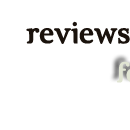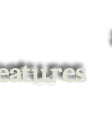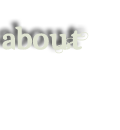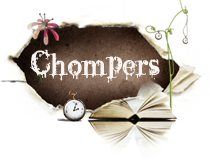A couple of years ago I was with a group of women I very much admire and we were talking about the young adult novel LOOKING FOR ALASKA by John Green. Now, I’ll admit, this novel is one of my all time favorite YA novels so I might have been a tad overly-enthusiastic about it when one of the women interrupted me to tell me she’d “never let her 14 year old daughter read it.” Um, what?! Her reaction surprised me, to say the least. Not only would I have loved this book at 14 – it was funny, truthful, heart-breaking, amazing – but I didn’t expect that response from this particular person. “It’s not appropriate,” one of the other women agreed, surprising me more. “Well, maybe for your daughter…,” I started. “No,” she said. “For all 14 year olds.” We moved on to other topics, but I had snagged on the “all” in that sentence. It burrowed into that place in my belly where I often feel like I store the pieces of me that don’t always mesh with mainstream opinion, that little place I store doubts and fears.
Still, this wasn’t new to me – this reaction to what books young people should and should not be reading. I’ve been teaching high school English, drama and creative writing for 14 years. Believe me, parents have a lot of opinions about what books their kids can and cannot read. I’ve had plenty of parents ban a book from their child’s reading list or contest a book I’m teaching in class. They’ve told me their students weren’t allowed to read ENDER’S GAME (“bad message – sending a six year old to war”), THE GOLDEN COMPASS (“no talking animals”), THE SAMARUI’S GARDEN (“um, was that a sex scene?”), OF MICE AND MEN (“not okay with that ending”). The list is endless as to what I’ve been told their kids are not to be reading in my classroom.
So after trying to convince them, and often failing, I let their kids read something else. I do. Because they’re not saying all the kids shouldn’t be reading it (okay, some of them do say this) but mostly, they just don’t want their child reading it. I’m a mom. I understand that impulse to want to protect a child, to want to shelter and save and nourish a child. Some parents choose to do this by limiting sugar, or TV, or exposure to water sports. We all have things that make us feel threatened or afraid as a parent. I just don’t believe in telling other people what their concerns should be. I don’t believe in ALL.
Ironically, I partially wrote SONGS FOR A TEENAGE NOMAD because it was a book I would want to teach in a freshman English class, a book I thought would be fairly free of overtly objectionable material, only to find out it has been banned in several middle school libraries across the country. So much for good intentions.Because fear’s a tricky impulse.
We never know what’s going to set it off. Spiders. Chickens. Heights…..Books. Each of us have different fears…which is why ALL is the key word here. We can never really decide what’s appropriate for all of us. There’s no such thing. So as educators, as publishers, as librarians, as authors and book bloggers, we try to give out suggestions, guidelines, frameworks, so that people can decide what works for their own specific situations.
Yet, even with all this freedom of choice, people still try to ban books in wide, sweeping ways. I can honestly say I don’t understand this impulse. What if someone tried to ban pizza or the color red? Ridiculous. Why is it different with books?
The other day, I was talking with the Academic Dean at the school where I teach. He’s a wonderful educator who has been doing this for many years. I told him I was writing a piece on the whole tricky subject of banning books. We talked about the necessity of “age appropriate” material – probably not too many people want to show a six year old Schindler’s List. But we talked about how different people had dramatically different comfort levels when it came to content. He’s had his own fair share of parents flipping out (er, expressing concern) over the book lists he hands out in his Government and World History courses. Then he said something typically thoughtful that stuck with me. He said (and I paraphrase) that he understands the parental impulse to shield. He just believes that rather than trying to change the world a child inhabits (to make them believe that through a sheltering of information that they live in a different world than they actually do), he wishes parents would give children the tools to navigate the world they actually live in – whether it’s a seven year old world, a 14 year old world, or an adult world. Talk to them, discuss things with them so they can make good choices. I thought this was beautifully said, because in doing this, parents can help their children succeed in a complicated world rather than simply hiding the complications.
Throughout my teaching, I’ve discovered that in allowing students to tackle sometimes difficult content, they are pushed to hold it up against their own values and beliefs and form an opinion. They have to (gulp) think for themselves about what it is they believe, what offends them, what interests them. I often find myself saying to parents that reading diverse content gives your child actual armor against bad stuff should they encounter it in real 3D life. In high school, I read a novel where a character died of a cocaine overdose – heavy, awful content – but it didn’t make me glorify that lifestyle…it made me know I wanted nothing to do with it. Books are test rides; they allow for do-overs. They provide us a comfortable way to try on idea through another person’s (albeit fictional) experience and ask ourselves how we would have handled a particular situation.
But at the end of the day I come back to that one word: ALL. Not every book will work for every child. We do not live in a one size fits all culture and that is also true for books. Ultimately, a child should feel comfortable with what they are reading. If a book is going to freak them out or make them anxious or cause them stress, they don’t need to be reading it. Yet that doesn’t mean their friend who loves that sort of thing shouldn’t be reading it. As adults we’re allowed to choose the content we consume (no one is dragging me to a horror movie against my will). We self-select all the time. Children should also be allowed to say, “That’s not for me” or “I would like to read that,” and then be given the opportunity to explain why. My seven year old daughter won’t go near Disney movies. She finds them scary and upsetting. “Why do they hate all the mommies?” she wondered once. She told me that the moms always seem to be dead, or absent, or wicked. She has a point. But it doesn’t mean that I’m going to tell other parents of seven year olds that they shouldn’t let their kids watch Disney movies. It also means that when she’s ready to sit down and watch Bambi with me and talk about why Disney seems to have it out for mommies, I know we’ll have a really interesting conversation about it. Point is, we have to know our kids and we have to trust our kids. We have to offer them reading and viewing selections that match up with their sensibilities and encourage them to keep forming their armor and their own ideas as individuals. Okay, I’ll say it –all of us need to do that.
Saturday, September 10, 2011
Ban This! Author Bites - Kim Culbertson
I hit Kim up at a really opportune time to contribute to Ban This! because she'd just had an incident at her book group that fit perfectly into the banning mantra, the concept of "all." It's such a blanketing statement that can be detrimental to the greater good if used. How many of us really, truly, genuinely fit under that blanket "all"? I'll let Kim talk about it.










